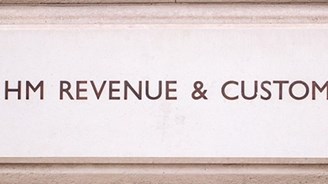Steps 4 & 5 – Presentation and Handling Queries and Objections

In our last blog we explored the introduction and needs identifications steps in order to make your face to face meeting more productive. Those who have missed the previous blogs can follow the links at the bottom of this page to catch up.
After you have made a good introduction, identified their needs, listened carefully and then checked your understanding with good questions, the next stage is to present your solution.
You should have some kind of presentation activity set and that could be a Powerpoint presentation, a presenter file or some reference material that you have put together - a combination could also work well. The main thing to appreciate at this point is your prospect's business and the key decision makers involved. This hopefully will have been done prior to the meeting so you will know how many people you are presenting to and who they are. This also is important when considering the mode of the meeting and presentation style e.g. a baker would not necessarily be used to Powerpoint presentations and a retailer may still be running their shop when speaking to you.
The presentation stage is the most powerful opportunity to get your prospect engaged with your offer as you will have targeted your solution based upon the fact finding steps taken previously. Your best steps are to only present the parts that are relevant and get to the solution very quickly otherwise you will lose your prospect and create a misfit solution. Anything else you offer is a bonus and contributes to your USPs (unique selling points) which can be left until the end.
The other key thing to remember when presenting is to check that they have understood your offer by simple response checks. These can be little prompts like 'Are you with me so far?' as this ensures the communication is not just going into a 'bull in a china shop' approach and also ensures a good rapport with your prospect. It is also good to use features and benefits as often as possible so that the prospect sees your worth to them as their prospective accountant.
After you have finished your presentation, the prospect will have seen your capabilities and see how you differ from competitors. After you have summarised your offering to the client the logical progression is to take questions.
Questions could be about checking their understanding, exploring more of the features and the benefits of your solution or a simple query. When this happens you have your prospect engaged with you and you know there is interest. It is also possible to see objections about your solution at this point and this is a good indication that you have engaged them but the solution may not seem right.
You may think it is daunting to take questions and handle objections but it is far better than a passive response like 'great thanks we'll get back to you' which is a meeting breaker and does not lead anywhere. If we explore why they may have not given good buying signals to you then it could be related to:
- Disinterest
- Dissatisfaction
- Doubt
Any of these three factors could occur in the initial feedback and it is your responsibility to uncover the reason behind them.
If you get a 'Thanks I'll be in touch' make sure you follow through, as time may be a factor and they need to attend to something (beware this can happen unexpectedly). In these circumstances you cannot close so the best thing is to propose a follow up solution by phone, email, letter etc. so they are still active in your prospect pipeline. This will also demonstrate your flexibility in how you deal with them in the future and you can plan a good follow up approach.
If you get an objection treat this as a welcome insight into their needs that you may not have fully identified or a chance to home in on the benefits you can offer. The ACEP framework is a good method to follow as it helps to overcome those objections followed by ASK close (which will be explained in steps 6 and 7).
ACEP simply stands for acknowledge, clarify explore and propose and helps with the query/objection process. The first stage is to clarify the objection so you are in tune with their thinking for instance 'I can appreciate that you have concerns over your tax bills and the reason for wanting to change your accountant' then clarify 'You would like more communication and understanding on how you can reduce your tax liabilities and see a marked improvement?' - a simple check back on what you have to overcome helps with the objection and keeps your conversation flowing with the prospect.
Explore the objection now and review your presentation where any points may have been missed or not understood. Exploring the objection may also mean going back to the questioning funnel to achieve the need that has not been fully explored. Once you've uncovered the reasons behind the objection then it is time to propose the solution to that specific objection.
These are two important areas to master in your meeting as keeping your prospect in tune with your solution and managing their expectations is important to winning them over. The ASK close forms part of the next blog as we explore the final two steps of closing and post communication actions.
If you have missed any blogs from the series please follow the links: Original article Step 1 Steps 2 & 3
Contributed by Norman Allison and Raj Rajput.



